AS MANY OF US address the routine pruning of our wardrobes, we may dither over whether niece Carolyn might like these black pumps, whether Dress for Success needs more tall-girl pants suits, whether Goodwill should be the final stop for the dismal leftovers.
No such dithering for the late Lauren Bacall: Between 1968 and 1986, the sultry screen actress made 22 gifts to the Museum at FIT, New York’s Fashion Institute of Technology, adding up to 700 objects—handbags, evening gowns, day dresses and suits, shoes and accessories. Granted, Bacall’s wardrobe had labels that read “Givenchy,” “Halston” and “Yves Saint Laurent” rather than, say, “Lands’ End” or even “Kate Spade.” And granted also, those knife-blade shoulders of hers made her the perfect hanger for tailored suits and body-conscious dresses before we talked about body consciousness.
The Museum at FIT was inspired by the range of Bacall’s gifts to mount an exhibit of Bacall’s clothing from the late 1950s to the early 1970s, “The Look,” back in 2015, the year after her death at age 89. That exhibit is, obviously, long gone, but it lives on at the museum’s website, to be savored at leisure. Here are a few of the beautifully tailored treasures from the museum’s collection.
—Nancy McKeon
“Lauren Bacall: The Look”: exhibitions.fitnyc.edu.
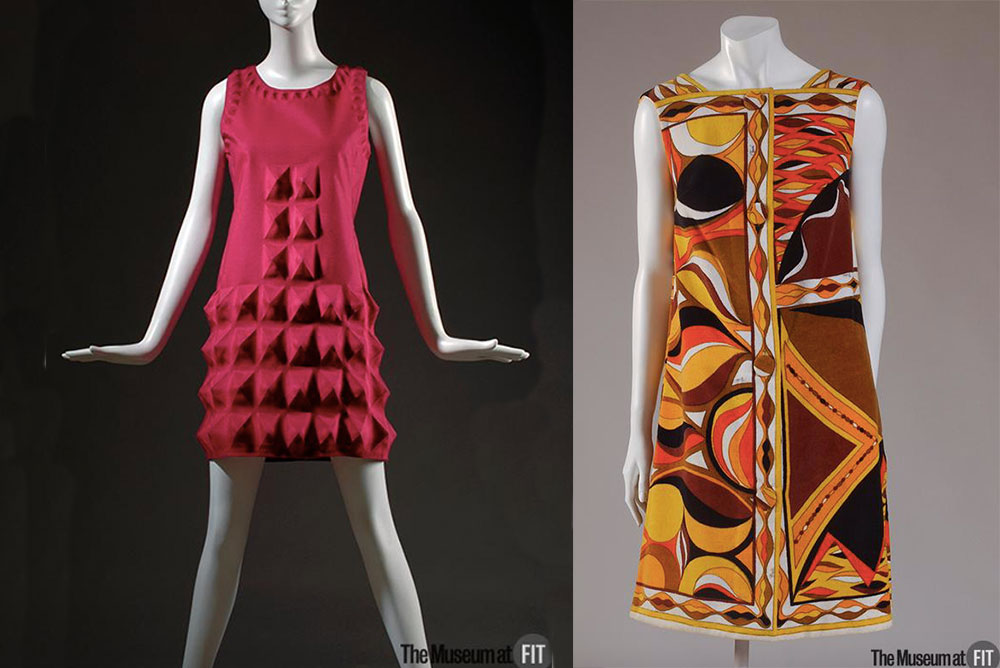
Bacall was known for her affinity for men’s-wear-inspired pieces, but she also was confident in the simple shape of a sheath or shift.
LEFT: If people today know the name Pierre Cardin, it’s probably from inexpensive licensed accessories. But in the 1960s, the designer was an innovator, experimenting with “space age” fabrics, even developing his own. The dress here is made of “Cardine,” a stiff synthetic that could be shaped, as with the pyramids punched into the skirt, and virtually suspended over the body, definitely not celebrating the female form.
RIGHT: Op Art met Emilio Pucci in the 1960s and the result was eye-popping pattern, as seen in this cotton velveteen mini-dress. And soon seen in myriad knockoffs in lesser fabrics at all price points.
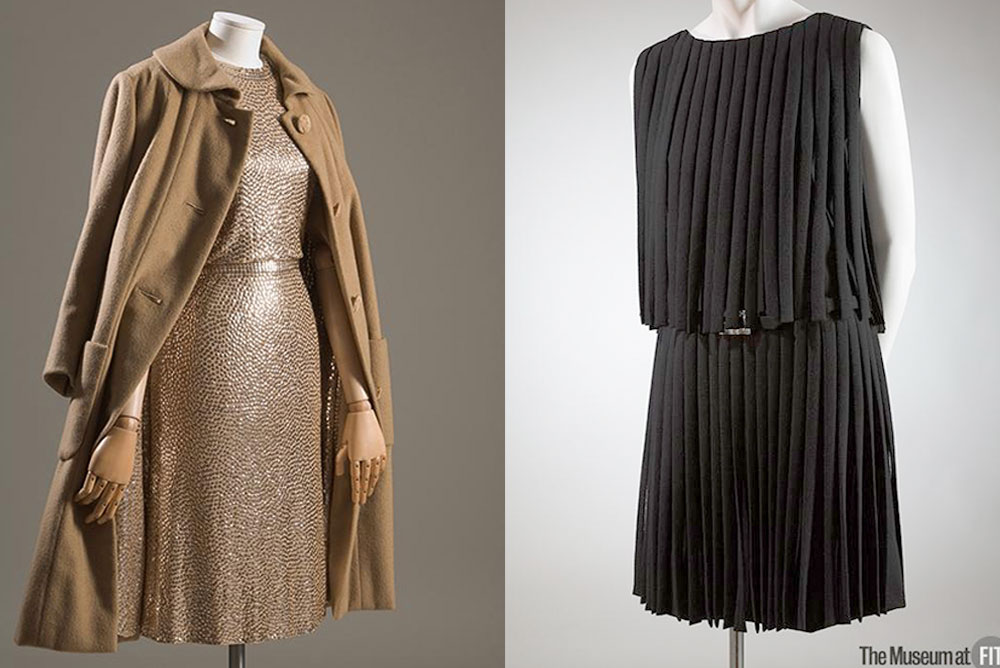
LEFT: Norman Norell’s “subway” coat for Traina-Norell, circa 1958, was modest, or as modest as camel cashmere can be, but its lining packed a limousine punch: gold sequins, the lining matching the gold-sequined sheath dress underneath. Norell prided himself on applying couture techniques to ready-to-wear, but his clothing was pricey ready-to-wear, to be sure, and was presumably rarely if ever seen on the subway.
RIGHT: Norell was known to comb through old fashion magazines for inspiration. In 1965 he produced so many designs similar to those of the 1920s that this short, flirty wool-crepe evening dress caused fashion writer Marylin Bender to wonder “Is it Norell . . . or vintage Chanel?”
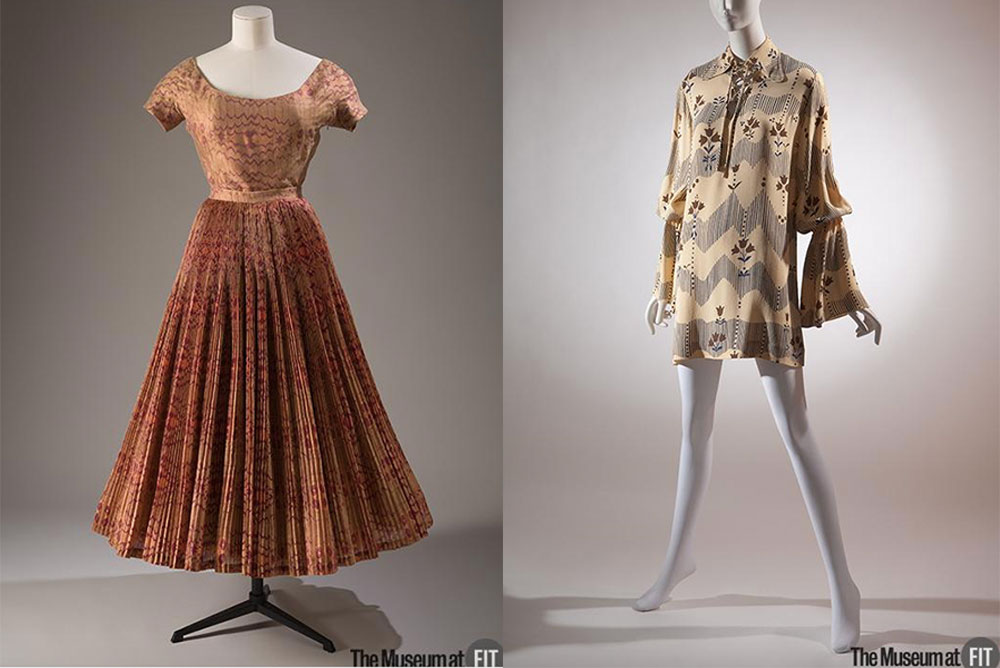
LEFT: Post-World War II fashion said “yes” to the waistline, as demonstrated by this Christian Dior two-piece dress of silk gauze for spring 1951. Harper’s Bazaar magazine reported that its “glimmering butterfly print” was designed by the photographer Brassai, and that the dress was carried by retail specialty store Henri Bendel. The dress appeared on the cover of Life magazine (but worn by a model, not Bacall).
RIGHT: Given today’s emphasis on sleeves, this rayon-crepe tunic, by English designers Ossie Clark and Celia Birtwell, looks quite contemporary, not 55 years old (it dates from 1965).
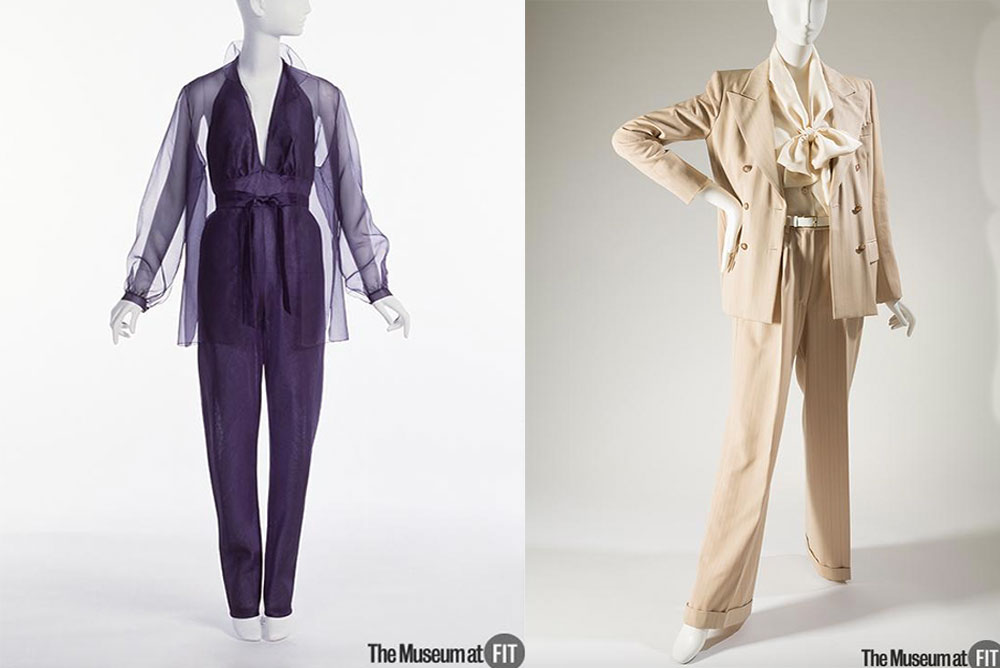
Bacall’s slim figure was perfect for the menswear-inspired looks that flourished in the 1960s and ’70s.
LEFT: Minimalist American designer Halston had a prominent presence in Bacall’s wardrobe. The jumpsuit was a specialty of his, and the purple silk organza jacket, which floats over the main garment, reveals the bare back of this 1972 piece.
RIGHT: Yves Saint Laurent and Lauren Bacall were a heaven-sent combo. The French designer’s tuxedo look, introduced in 1966, gave birth to a more lavish “gangster” look, and the slim Bacall could carry it off. This pinstriped wool twill ensemble dates from 1979.
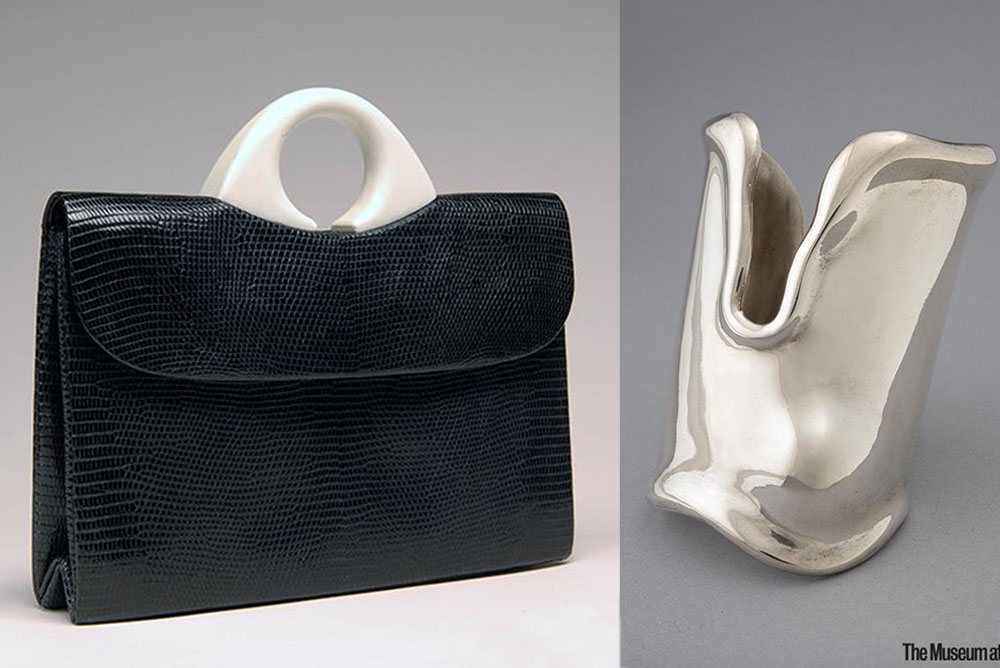
Bacall’s accessories could be simplicity itself.
LEFT: This handbag from around 1968 shows how Hubert de Givenchy achieved classic balance marrying the texture of black lizard with the industrial smoothness of the bag’s white plastic handle. Just drop-dead gorgeous . . . and timeless.
RIGHT: The work of Italian jewelry designer Elsa Peretti is closely associated with American designer Halston, her organic shapes, such as this bold sterling-silver “Bone”cuff, playing off the slim, fluid lines of his gowns and daytime dresses. Today, this “Bone” cuff, and several variations, are carried by Tiffany.
